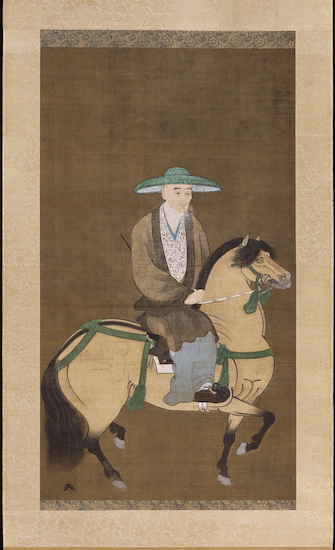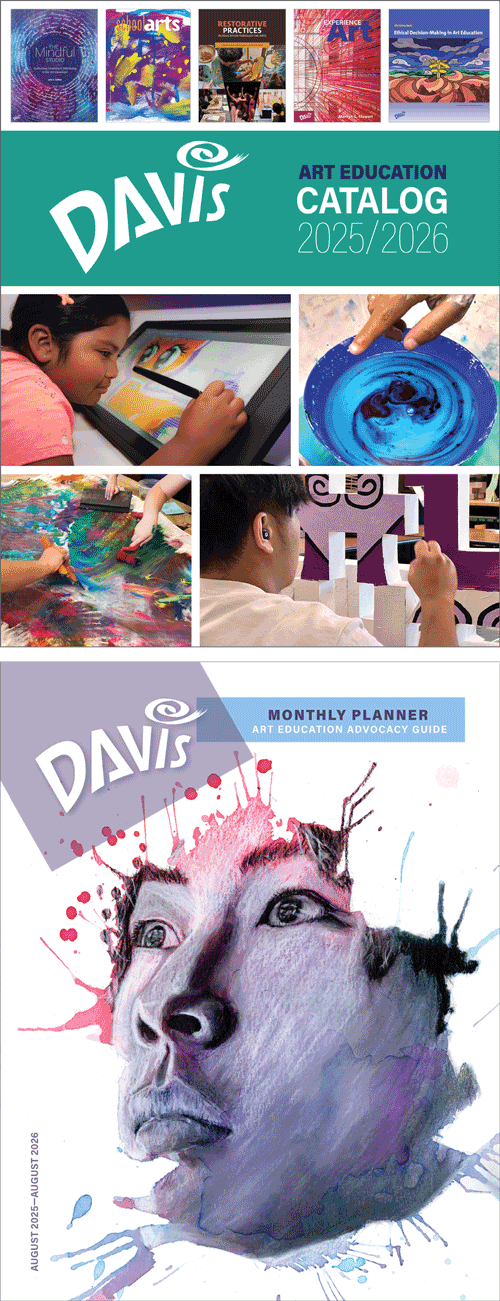Artist Birthday: Kanō Motonobu
The Kanō School artists—the favored group of painters for the nobility and shogunate—worked in a variety of genre, including traditional yamato-e that included bright patterns and gold leaf, monochromatic landscape painting, and realistic portraiture.
Artist Birthday for 28 August: Kanō Motonobu (1476-1559, Japan)
Kanō Motonobu was an painter of the group of artists who were favored by the nobility and shogunate in traditional forms of Japanese painting.
 |
| Kanō Motonobu, Iio Sogi. Ink and color on silk, hanging scroll, 98 x 54.4 cm. © 2025 Museum of Fine Arts, Boston. (MFAB-1049) |
Kanō school artists basically continued the Chinese-influenced earlier Japanese portraiture style with little change. Portraits were usually presented on blank backgrounds, with emphasis on the features of the subject. This was in keeping with the prevalent Zen Buddhist preoccupation on the character of the individual. Clothing, and even the stance of the horse are totally Chinese in nature. Iio Sogi (1421–1502) was a Zen Buddhist monk and renga poet (renga is collaborative, with various poets each writing a stanza one after the other), the greatest of his period. He was known as a traveler-poet.
The Kanō School (not a literal school, but a group of like-minded artists) of Japanese painting emerged in the 1400s and lasted for more than 300 years. Popular among military patrons, Kanō School artists employed dark ink washes with bold, precise outlines and brushwork. While earlier Kanō works featured little or no pigment, later examples incorporated bright color. Typical Kanō paintings were rendered in large-scale formats and integrated Chinese subjects and themes.
To understand the importance of the school’s influence on Japanese art, one must understand the period in which it arose, the Muromachi (1392&ndasgh;1573). The Kamakura period in Japan (1185–1333) is named after the samurai (military) clan that established the shogunate, a military dictatorship, that would rule Japan until the mid-1800s. The respected emperor no longer had any real power. The period was wracked with civil wars.
The Muromachi period that succeeded it is named after the part of Kyoto from where the shogun's family, the Ashikaga, ruled. The Ashikaga gained control after bringing some sense of order back to Japan. Unfortunately, another major civil war broke out in 1467 which would last another hundred years.
It was during these two difficult periods, that impoverished much of Japan, that Japanese art established the fundamental understandings that characterize Japanese art to the present day: wabi (integrity), sabi (time-tested), and shibui (bitter but refreshing). These represented the Japanese learning to live with difficult times, establishing an aesthetic underpinning to all Japanese arts. The emphasis was on a total harmony between art and nature, the ancient values of respect for ancestors that was part of Shinto, and the humility (simplicity) implicit in Zen Buddhism.
Typical Kanō paintings were rendered in large-scale formats and integrated Chinese subjects and themes. The “school” was particularly renowned for the continuation of Chinese-style monochromatic landscape paintings of the “southern style” the much-lauded landscape aesthetic of the Southern Song Dynasty in China (1127–1279/1280), a period which established the canon that defined the classic Chinese painting style.
Like his father and the subsequent Kanō artists, Motonobu served the Ashikaga family of shoguns. These artists inherited the Chinese-inspired monochromatic painting style (suiboku-ga, “water-ink painting”), which was favored by the Ashikagas and shoguns of the following Momoyama (1573–1615) and Edo (1615–1868) Periods. Motonobu was also the son-in-law of Tosa Mitsunobu (1434–1525) founder of the Tosa School (again, not a literal school) of painting. That school specialized in the native Yamato-e (Japanese Painting) style that had evolved during the Heian Period (794-1185), the first period in which Japanese painting flowered. Yamato-e favored bright colors combined with vigorous Chinese brushwork, often on a gold leaf background.
Motonobu was brilliant in landscape (both in monochrome and in light color), and also painted figures, and bird-and-flower pictures (kacho-ga). He painted in the styles of several Song artists, always attributing their influence.

Comments